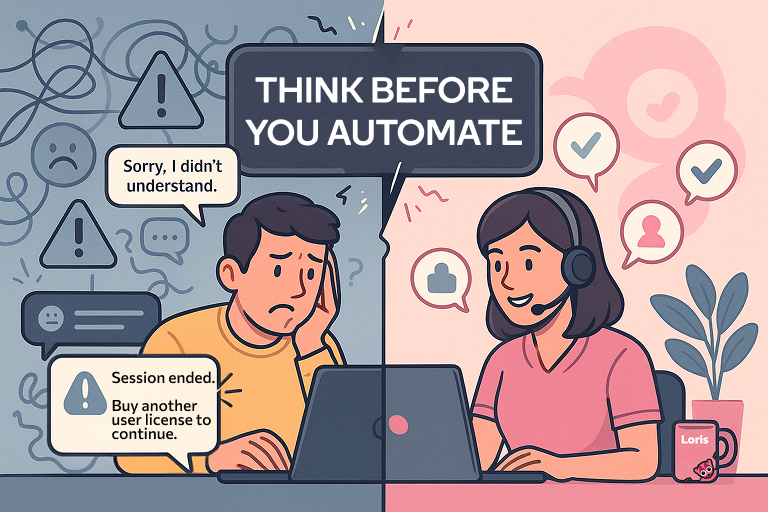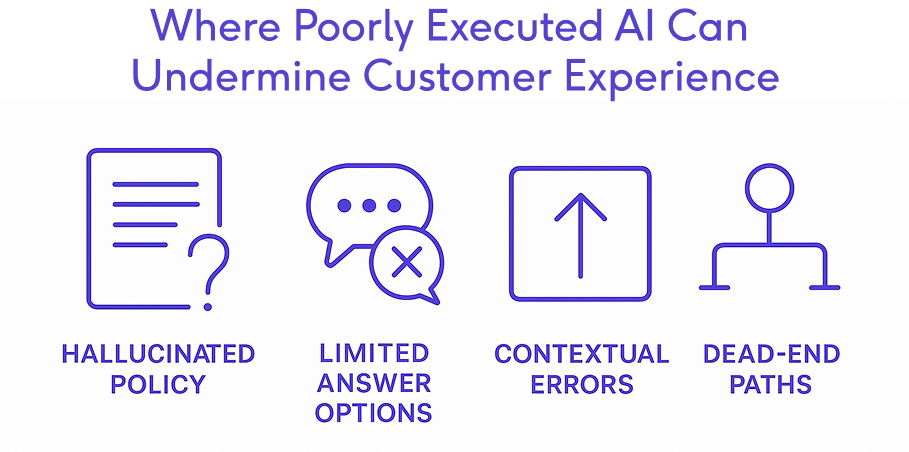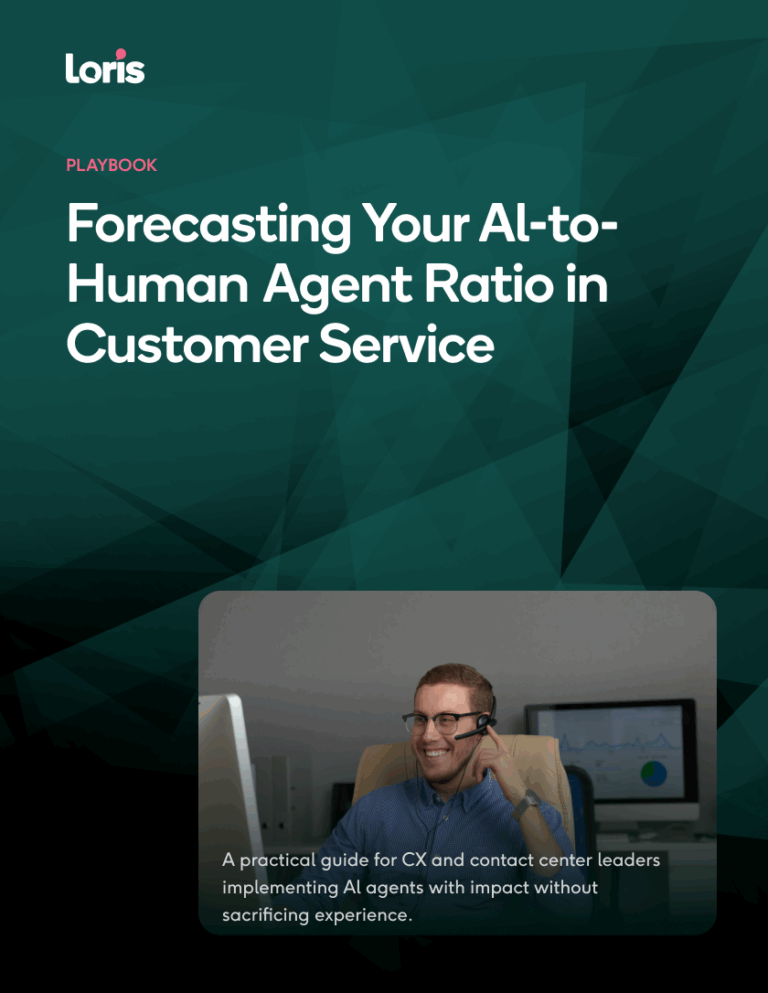
Customer experience leaders are under pressure to automate. Chatbots, generative AI agents, and digital self-service tools all promise speed, scale, and savings. But here’s the problem: when brands rush into automation in customer experience without understanding the full cost of broken or incomplete conversations, they end up paying twice. And so do their customers.
The simple truth is, not all conversations can or should be automated – because not every customer issue can be automated away.
Automating the Wrong Use Cases Creates Broken Journeys
We’ve all experienced it. A chatbot gives a generic answer that doesn’t address the problem. An AI agent confidently explains a return policy that doesn’t exist. Or worse, the system loops you through dead ends before dumping you on a human agent with no context.
These are more than UX annoyances. They’re trust-killers. They tell customers that you don’t understand their issues, and you prioritize your costs over their experience.
In addition, despite the fact that organizations see self-service adoption and success as two of their top ten priorities, according to Gartner, only 14% of customers ever actually resolve their issues via self service.
So if chatbots can’t deliver and self-service options aren’t working, does that mean you should give up on AI all together?
NO! It means automation in customer experience is a scalpel, not a hammer, and needs to be used judiciously, not as the solution to every problem. Without this intentional approach, you’ll do more harm than good, and have a tough time seeing the value through all the grief.

It’s Not Just Frustration, It’s Risk
Generative AI is powerful. And companies are rightly using it for everything from writing blogs to analyzing financial reports to yes, talking to their customers. But hallucinations, that is creative liberties generative AI tools take to fill in gaps of knowledge, are still a risk. In one widely reported case, an airline’s chatbot invented a refund policy, and the court ruled that the company was liable, not the AI provider. Even AI companies themselves are falling victim to their AI agent’s hallucinations, showing that, even if your bot doesn’t get you sued, it can still cause headaches for you and your customers.
On the other end of the spectrum are chatbots that aren’t as creative, but they’re also not as helpful. These have such limited usability that they only serve as a barrier to customers reaching agents and do nothing to actually resolve their issues.
AI can also miss nuance in regulated or emotionally sensitive contexts, potentially making these issues worse. For example, financial services and healthcare organizations not only have strict regulatory guidelines, whether for recording complaints or handling escalations, but also can be emotionally charged, making them the lowest-suitability for automation in customer experience.
The last limitation of AI agents are dead ends; the frustrating loops that you can’t seem to get out of or the inability for the bot to transfer you to an agent that can actually help you.
All of these factors impede the customer journey, making customers more frustrated by the time they reach a live human agent. That’s why the best approach to automation in customer experience isn’t full automation. It’s automating only the issues that AI can handle well.
Forecasting Your AI-to-Human Agent Ratio
Understand where you should apply AI agents – and where human agents work best – to maximize your AI investment without sacrificing customer experience quality.
How to Balance Automation and Experience
In our AI Forecasting Playbook, we walk through how to classify your support tickets by complexity and value so you can understand who can and should be handling them. High-volume, low-risk interactions – like password resets or shipping confirmations – are prime candidates for AI agents. But account disputes, regulatory complaints, or high-churn-risk contacts? Those need the human touch.
The most successful brands don’t aim for 100% automation, because they know there will always be a need for smart, capable human assistance. Instead, they use AI to resolve the transactional issues and humans to handle the more complex, consultative, or emotionally charged interactions. This hybrid approach creates this balance between efficiency and experience, enabling brands to cut average handle time without frustrating customers.
Automation is a Tool. Know When to Use It and When Not To
AI agents are here to stay. And have massive potential to improve the speed and quality of the customer experience. But automation in customer experience is not a binary on or off. Nor is it a goal in and of itself. The winners in CX will be the ones who know when to use AI, when to hand off to human agents, and how to build feedback loops that continuously improve all their agents.
The fastest way to lose a customer? Show them you don’t understand their needs by giving them a partial answers when they have a a high-stakes question.
